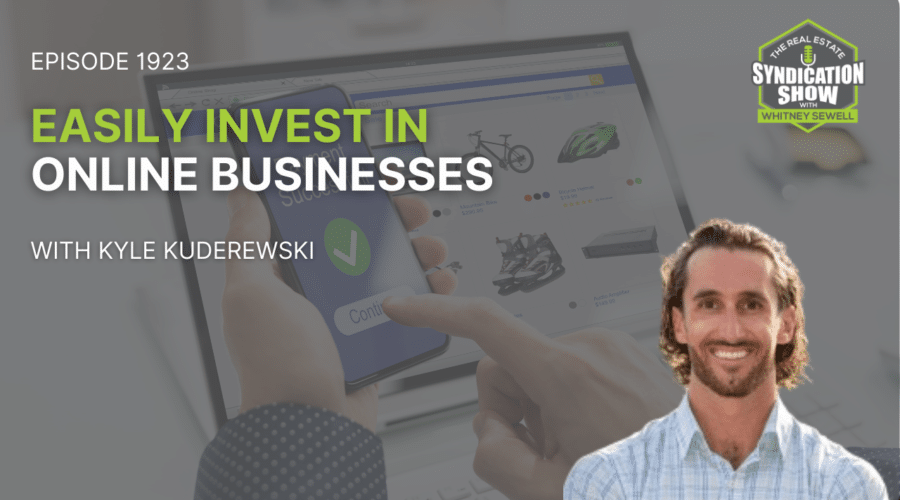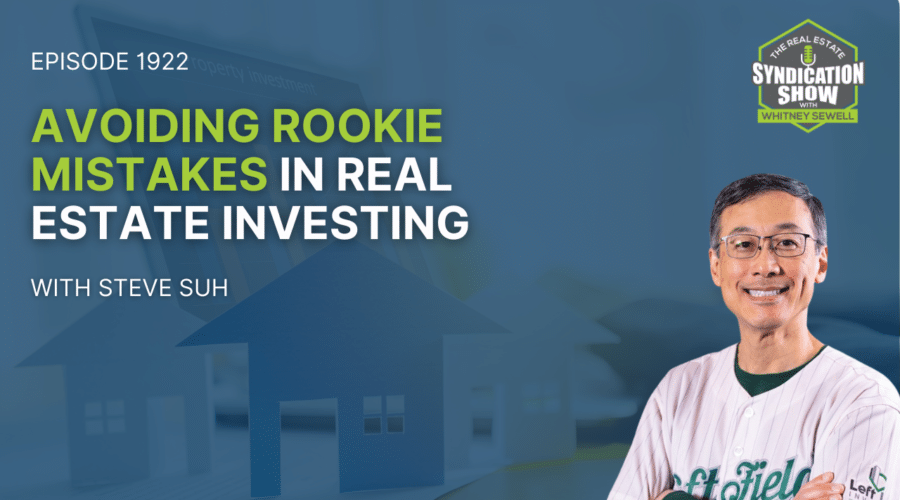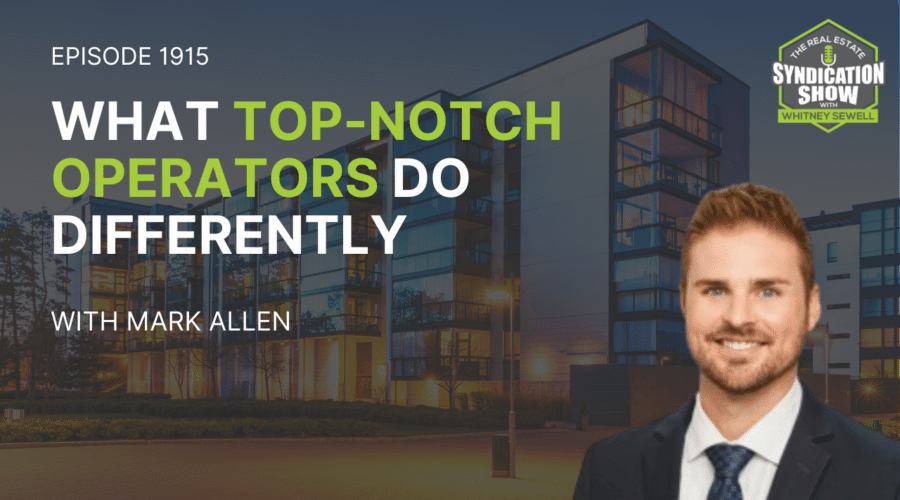With more than 700 million users in more than 200 countries today, LinkedIn has grown to be the world’s largest professional networking platform. It offers many opportunities for real estate business owners and industry professionals like us to establish our brand in the market, position ourselves as experts, find partners and investors, and gather leads. So, shouldn’t we be taking advantage of these opportunities that can help expand our business, increase our profit, or grow our career as real estate professionals?
I had the chance to talk about this topic in a recent podcast episode with Ellis Hammond, real estate investor/operator, founder of EllisHammond.com, and co-founder of Symphony Capital Group. A LinkedIn influencer, Ellis manages a network of investors and is also a spiritual formation and leadership development director for college students. He enjoys helping other investors utilize the platform to find more deals and source capital for their projects.
Ellis helped us break down LinkedIn’s useful features, gave tips on creating an effective profile, and showed how to make LinkedIn work to our advantage. Let me share them with you here. If you’d like to listen to the full podcast episode, click here.
Why LinkedIn?
LinkedIn has gained an enormous following by allowing users to create an online professional brand that helps open doors to opportunities and networks. It gives you the space to showcase your expertise, achievements, recommendations, connections, and your credibility in your industry. As more business tasks and deals continue to be conducted virtually, your professional network is now more important than ever in achieving your goal.
“LinkedIn is the place where you can unashamedly talk about who you are, and what you’re doing. It is a 24/7 billboard for business owners. It’s a 24/7 cocktail party where you constantly meet people. It’s not just handing out business cards but an actual platform for building relationships,” says Ellis, adding that joining the platform helped him transition from his non-profit work into syndication.
Building your LinkedIn profile
Before establishing connections and building relationships through LinkedIn, you first have to build an effective profile. Here’s what you need to keep in mind when creating your LinkedIn bio.
A professional headshot
It’s the first thing that draws people’s eyes when they visit your page, so make a good impression. A selfie on your phone will not be proper, says Ellis, so invest in a professionally done photo.
Complete all sections of the profile
Make sure each section of the profile is complete because missing or incomplete fields ultimately translate to missed opportunities. Ellis suggests going beyond just uploading your resume – highlight and present some of the more interesting facts about yourself.
Your bio should answer these questions: Who are you? Who do you serve? What do you do for them? Why do you do what you do?
Ellis explains, “Your bio must talk about you in a way that will highlight who are you in the sense of who are you trying to reach and how you serve your clients. Answering those questions will allow you to define that.” So, Ellis suggests profile descriptions that highlight what you do (a multifamily syndicator), who you serve (in my case, investors and adoptive families), what you do for them (helping them achieve financial goals and helping fund adoptions).
Add keywords in your description
Using keywords like “real estate”, “multifamily”, plus your location or area of service will help people find you more easily.
Short but interesting is better
The “About” section is the ideal space to communicate your value, which should be equal parts storytelling and sales pitch. “People aren’t going to read this big, long paragraph but the shorter, more interesting you make it, especially if you’re telling a story, the more marks you hit,” says Ellis.
Sentences not paragraphs
No one likes to read paragraphs, so Ellis suggests a sentence or two followed by a line break, then a couple more sentences, then a line break, and so on.
Have a call-to-action
“The most important thing in your bio is to have a call-to-action. After the ‘who you are, who you serve, what you do for them’, then state ‘what do you want them to do?’” says Ellis, highlighting that being specific and clear about your objective – stating what or who you’re looking for – would make it easier for you to establish connections.In his case, he says, “For me, it’s – ‘I’m Ellis Hammond. I started in the nonprofit world and now I’m in multifamily investing. Why? Because I’m passionate about building vehicles for wealth and helping others to do the same. I’m looking to partner with other operators of multifamily syndication and investors who want to be a part of this journey.”
List your contact details
Show people the ways they can get a hold of you by filling in links to your other social profiles and your website in the Contact Info. Lead visitors in the direction of your blog, your podcast, and your meetup groups so that your work and your relevant activities can draw more attention. You can even include a link to your calendar to make it easier for people to set a meeting schedule with you.
Creating content
Your aim on LinkedIn is to build a network of business connections – the next step to doing that is encouraging people to click on your page and interact with you. You achieve this by creating great content. It’s a very common mistake among professionals to underutilize LinkedIn. “It’s a less saturated platform than Facebook or Instagram because people post on it much less so there’s less competition. On top of that, there’s no need for a big marketing budget. So, why not take advantage of these benefits by using the platform more?” explains Ellis.
By producing and posting relevant content, you will slowly build your status as an authority or an expert in your field who draws in like-minded individuals.
Here are some tips on creating content for LinkedIn.
- Repurpose content from your other platforms
If you are producing content in other media or platforms such as podcasts or blogs, repurpose your content from that media to create posts on LinkedIn via the following forms:
- short video clips of your podcast
- bite-size pieces from the blog article
- quotes and catchphrases from the podcast or blog
- Push for engagement
Remember, it’s not just about creating content but creating engagement on your post. So, post topics that encourage a response. If you’re posting a link, express an opinion with it. Or post questions that will stimulate thinking and discussion.
Ellis cites this example: So, you heard Robert Kiyosaki say in a podcast that college education is a thing of the past. Why not post a link to that podcast and ask a question “Robert’s said this on his podcast, that college education is a thing of the past. What do you think about that?” Then you begin to build this conversation and the more people engage with your post, the more views you get for your content and more exposure to your profile.
- Leave comments on key influencer’s posts
For those who do not have their own platform to draw original content from, Ellis suggests that the second best thing to do on LinkedIn is to interact with other key influencers’ content. “Go find who the main influencers are in your industry and go interact with their content. The reason that’s so important is that they’re already getting a ton of views and interaction on their content,” advises Ellis.
Interacting on LinkedIn means leaving meaningful comments or even questions on the influencer’s posts and responding to others’ comments when needed. Ellis says these interactions raise your profile and increase your visibility among influencers and other users.
“The main influencer is going to interact with you so that’s key while his audience and your audience will see your interaction with the influencer. You will then begin to show up in multiple places and people will start taking notice. It’s a huge way. So, go put your two cents on a bunch of different posts each and every day,” suggests Ellis.Interacting with the main influencer’s page also benefits you by expanding your reach and amplifying your voice, because comments you make on their posts appear on your network’s feed. “It’s much better to comment than to share because LinkedIn’s algorithm favors ‘likes’ and ‘comments’ than sharing other’s posts,” adds Ellis.
Using hashtags
Using hashtags increases the reach and potential engagement of your content by allowing others to find you. You can also follow hashtags by typing the hashtag into the search bar at the top of your feed and clicking “Follow”. This ensures that contents with the hashtag that you follow find their way onto your feed.
“When you are creating content you want to have no more than three to five hashtags on your post. Anything more than that starts to get negative effects. You want to use hashtags that are relevant, something that’s top-of-mind for people in your industry,” advises Ellis, adding that in real estate investing, hashtags of interest may include: #multifamily, #PassiveInvesting, #CashFlow, #AlternativeInvestment, #FamilyOffice. Clicking on a hashtag will let you see the number of followers it has.
Another way of choosing hashtags is to take a page from industry leaders who have a significant following. Check the hashtags that they use and find one that you can also use, so you can form an indirect association with the influencer. However, you should avoid using hashtags that have millions of followers as you will likely be drowned out by the big influencers.
Ellis says, “#RealEstate might not be a good hashtag because of the million followers but #Multifamily is niche enough where you can still gain some traction.” He recommends using one that has at least 500 to a couple of thousand followers. Keep in mind, using hashtags helps other members find conversations that match their own interests and, therefore, find you, so use them wisely.
Building your investor network
Joining LinkedIn groups is key to building your network. Initially lacking business connections and needing investors in his deals, Ellis turned to LinkedIn to build his network. “There’s a commercial real estate group, about 30 members, that I’m a part of and we do different challenges throughout the month. That’s allowed us to form this tight-knit group and we’re posting good stuff, we’re interacting and it has put me in a place in this industry,” shares Ellis.
He adds that being on his network’s newsfeed every day – sometimes 3 to 5 times daily – helped him stand out in people’s minds that he even receives recommendations and referrals from LinkedIn users who are outside of real estate.
Another way of building your network is to send connection invites. When sending connection requests, go to the individual profiles to send a request then type a more personalized message in the message box in order to increase your chances of being accepted. While it’s not frowned upon to connect with strangers on LinkedIn, it’s imperative to take on a more professional and courteous manner in telling why you want to connect and what value you might have to offer one another.
Managing time spent on LinkedIn
So, how much time should you spend on LinkedIn to maximize the benefits that you can get? Ellis suggests that if time is an issue and you are unable to create original content, “just go in there and leave your ‘18 cents’ on other influencers’ pages”. To maximize your time, go to the search bar and type the hashtag that you follow. Choose posts that appeal to you then leave comments. Spending 25 to 30 minutes daily should be enough to increase your engagement and visibility. “That’s an easy strategy and it’s better than doing nothing,” says Ellis.
Nonetheless, Ellis encourages users to think about content organically and practice posting original content. “What I do on Sundays, I open up a Word doc and just try writing content so I have some things to post for the week. You will find that when you start creating content, you’ll be more consciously aware of stuff that can be used as content. So, it begins to flow organically because everything will become an inspiration,” shares Ellis.
For example, he recently shared a post about a Corvette with the caption: “This is a really cool car but is it better to purchase this with cash or with cash flow?” instead of “Here’s this cool new Chevrolet Corvette and it is going to come out at $65K”. Posing a question like this challenges readers to think about profit from investing instead of just receiving information.
Final Thoughts
As we are in the business of people and relationships, we will always need our professional communities to help us succeed in our business goals. Your LinkedIn feed can be home to one of these communities. So, build your page now and seize opportunities.



